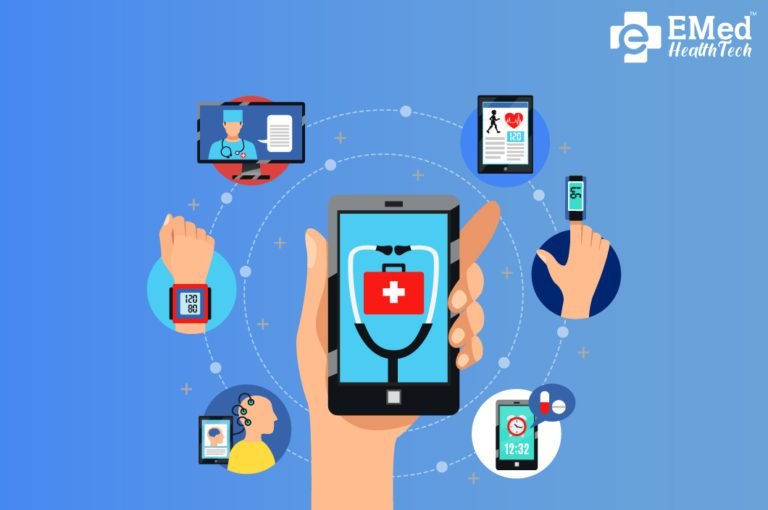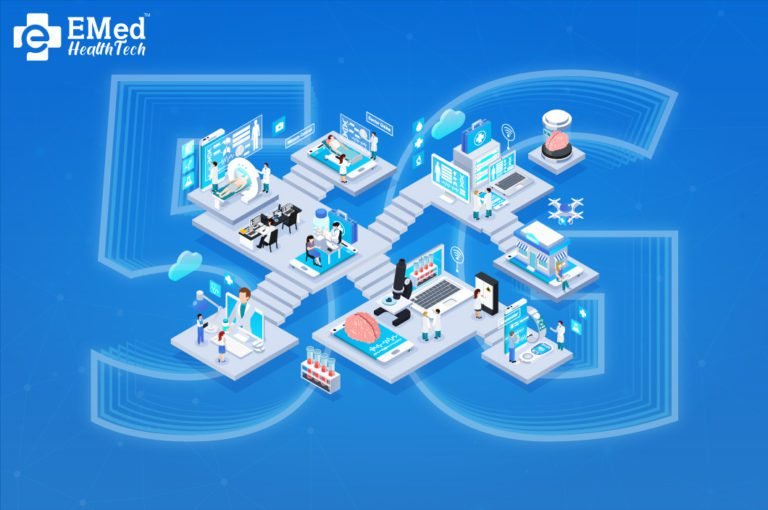Ami Kothari
Technological innovations have brought in far-reaching transformations in almost every field we know of. And at present, one of the most promising developments is in the field of healthcare: The implementation of the Telemedicine app.
India, like the rest of the world, has witnessed a peak in telemedicine services lately. COVID-19 has fast-tracked telemedicine into mainstream healthcare and it is here to stay. The recently presented Union Budget 2022-2023 is a strong indication of this.
What the Union Budget Says About Telemedicine and Digital Health
With the success of telemedicine services in the last two years, the Indian government is sparing no means to develop it further. A glimpse of this effort can be seen in the expenditure allocation for healthcare in the Union Budget 2022-2023. In a welcome move, the budget has taken some high-priority steps towards digitalization of healthcare services and the use of telemedicine as a tool to combat the ongoing mental health crisis.
The government has stressed the importance of digital healthcare by announcing the rollout of an open platform for the National Digital Health Ecosystem (now called Ayushman Bharat Digital Mission or ABDM). This would consist of the formation of digital registries for health providers and facilities, the creation of unique health identities for all Indians, as well as ensuring universal access to health services.
In addition, the government also announced the launch of a National Tele Mental Health Programme to strengthen mental health support services for people of all ages. This 24/7 telemedicine-based mental health program will be supported by a network of 23 tele-mental health centers, with the Institute of Mental Health and Neurosciences (NIMHANS) serving as the main hub.
The launch of the National Tele Mental Health Program is being hailed as a positive step towards recognizing and addressing mental health issues. The program is aimed at providing counseling and care to people in need. This is especially laudable given the emotional and mental burdens that a huge section of the population is carrying post-COVID.
What’s truly encouraging is the government’s recognition of the fact that the telecommunication infrastructure needs to improve to ensure that the aforementioned benefits reach across the country and are accessible by one and all. From this perspective, the budget lays the ground for 5G rollout and deployment of optical fibers in rural and remote areas of the country under the ‘Bharat Net project’.
These steps reflect the government’s focus on building a strong and holistic health system and steering the country towards a truly digital ecosystem.
Now that we have seen the government’s progressive stance on telemedicine, let’s see why it is so important after all.
Why is Telemedicine So Important?
The introduction of telemedicine in India dates back to the early 2000s, with ISRO playing a vital role in implementing the pilot project. After that, the joint efforts of ISRO, Ministry of External Affairs, Department of Information Technology (DIT), Ministry of Health and Family Welfare, etc., helped expand the telemedicine network further.
Being the second most populated country globally, the doctor-to-patient ratio in India is far lower than the standard ratio recommended by the WHO. The growth of telemedicine services in different parts of the country made it up to some extent, although it remained relatively unknown in several regions. Moreover, the lack of guidelines on the same often thwarted attempts of large-scale implementation.
However, the popularity of telemedicine received a big boost during the pandemic, when the Indian government imposed a nationwide lockdown to curb the spread of the disease. With outpatient departments shutting down in several hospitals across the country and safety concerns prohibiting people from opting for face-to-face consultations with medical professionals, the government needed to develop an effective solution.
During this time, digital health services, including telemedicine, came to the rescue. Digital healthcare services, including telemedicine, were encouraged by the government to deal with the problems in mobility brought on by the pandemic. As per a 2020 report by Practo, there was a 500% growth in online consultations, with around five crore Indians choosing to access healthcare services online. And approximately 80% of the people mentioned above consisted of first-time telemedicine users in the country.
The benefits and convenience offered by telemedicine and its growing popularity among a large section of Indians have prompted more and more healthcare providers to embrace this technology. Moreover, it has also promoted the development of advanced digital healthcare equipment that aids remote monitoring, diagnosis, and treatment. As a result, healthcare IT companies have also started focusing more on developing practical telehealth apps that allow patients to opt for consultations from the safety of their homes.
Government’s Efforts in Promoting Telemedicine
The government of India played a prominent role in popularising telemedicine in the country during the pandemic. The government deployed a national telemedicine system on 9th August 2020 as part of the Digital India mission. Known as eSanjeevani, this service enabled patients to seek medical help from professionals without leaving the safety of their homes. This was the first time a large-scale telemedicine service was implemented in India.
Further developments in this regard came from the National Digital Health Mission (NDHM) announcement on 15th August 2020. The objective of this mission was to build a robust digital infrastructure to provide country-wide healthcare services.
The NDHM infrastructure includes the implementation of several digital systems across the country, such as Health ID, Digi Doctor, Health Facility Register (HFR), Personal Health Records (PHR), and Electronic Medical Records (EMR). In addition, it also aims to incorporate telemedicine services and an e-pharmacy system within its ambit.
The main goal behind the launch of this mission is to create a national digital health ecosystem that would function as a comprehensive solution for all healthcare-related needs of every Indian citizen.
In short, with government support, the future of telemedicine in India seems bright. Effective healthcare digital marketing strategies will further help to promote the adoption of telemedicine and revolutionize the arena of healthcare in India.
Summing Up
India is on the cusp of a massive digital health transformation. The push towards more accessible digital healthcare, especially telemedicine services, is at the core of this transformation.
The telemedicine industry in India is growing steadily with the union budget and other government attempts slowly but surely removing the obstacles that have limited its growth so far. While hurdles like lack of adequate infrastructure, proper training of medical staff, connectivity issues, data protection concerns, as well as public awareness still exist, they are being addressed.
All of this makes one thing clear — telemedicine isn’t a temporary trend that will fall into oblivion in the post-pandemic era. It is here to stay and will help transform the field of healthcare for the better in the long run.
Are you thinking of developing an effective telemedicine app to boost your healthcare business and how to build your own telemedicine app? EMed Healthtech can help you transform your business with customized software solutions. Reach out to us today!
Related posts

Digital Healthcare
10 Digital Healthcare Trends To Follow in 2023
10 Digital Health Trends To Follow in 2023 which can help developing countries in advancing their healthcare system.
Read more
Digital Healthcare
10 Benefits of 5G Launch on Healthcare in India
10 Benefits of 5G Launch on Healthcare in India
Read more
Digital Healthcare
How Integrated Platform is Shaping the Future for Healthcare Providers?
How Integrated Platform is Shaping the Future for Healthcare Providers?
Read more







